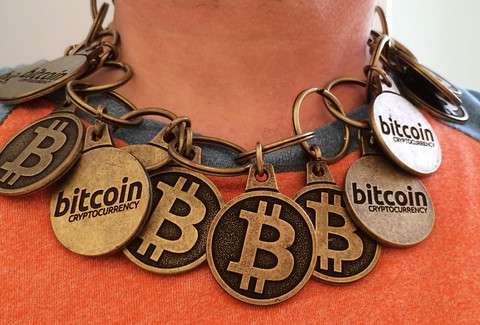
Adoption of a digital euro is not guaranteed and — in any case — not expected to materialise before the end of 2026 (Photo: Michal Jarmoluk)
Along with most central banks around the world the European Central Bank (ECB) is contemplating a central bank digital currency.
Following a public consultation and an experimentation work with the euro area national central banks in 2021, the ECB is currently exploring the optimal design of a digital euro.
-

A digital euro would represent a step change in cross border payments — making international money transfers faster, less costly and more transparent (Photo: BTC Keychain)
Regardless of the final structure, a digital euro would complement cash in payments by providing a digital alternative.
This has implications for everyone. First and foremost, if adopted, a digital euro would represent a step change in cross border payments, making international money transfers faster, less costly and more transparent. Existing global payments system comprises non-transparent and costly transaction chains across correspondent banks.
An interoperable settlement structure would be expected to eliminate the need for such correspondent banking relationships for cross-border transactions.
Besides, responding to individuals’ and firms’ increasing preference for digital payments, it would serve as an alternative means of payment for retail transactions.
This would lead to structural changes in the industry, reducing the fragmentation of the EU retail payments market. Needless to mention, adoption of a digital euro could also promote competition and encourage further financial innovation.
While a digital euro would be convertible one-to-one with banknotes, it is not expected to completely replace the physical euro.
The ECB states that it would only be intended as an alternative means of payment for routine retail transactions in everyday life and not as an instrument for financial investments.
As a result, the policy-makers’ focus currently remains on potential retail implications.
The intention is to introduce a digital euro as a means through the introduction of a single, “one-stop” solution. This would provide a universally-accepted and secure solution that facilitates contactless and instant payments.
Despite its limited intended scope of general use, implementation of the digital euro will no doubt be a complex and fraught process with multiple challenges.
Fraught with challenges
For instance, recent research conducted by the ECB has indicated safety and security as the key concerns.
This means that, at the very least, solid measures would be needed against fraud and hacking, as well as secure and reliable payment authentication methods such as biometric methods of payment verification.
From a technical standpoint, policymakers are experimenting with different approaches and technologies, including both “centralised” and “decentralised” solutions.
It is also understood that two versions are currently being considered in the eurozone: an “online version”, which would allow payments to be processed by a third party, and an “offline version” in which payments would be made directly from person-to-person.
Technical challenges aside, adoption of a digital euro would require a regulation of the European Parliament, upon a proposal by the European Commission.
A recent consultation — which ended on 16 June 2022 — constituted the first step toward legislation from Brussels on a digital euro. From a legislative standpoint, adoption of a digital euro will particularly require laws in areas such as privacy and anti-money laundering.
After the finalisation of the current optimal design phase in October 2023, the governing council will then decide whether to move to the next phase, which is expected to take around three years.
This means that the adoption of a digital euro is not guaranteed and, in any case, not expected to materialise before end-2026.
In the meantime, there will also be domestic and foreign monetary policy and financial stability issues that policy-makers will need to take into consideration.
For instance, regulators will need to introduce measures to prevent an excessive and abrupt shift of deposits from commercial banks into the digital euro, which could create bank-run like severe liquidity problems for banks with system-wide knock-on effects.
In addition, high foreign demand for the digital euro from non-eurozone economies could put the euro under upward pressure, which could severely impair the price competitiveness of the member states.
A digital euro would also have implications for the monetary authorities in countries outside the eurozone. If the digital currency were to become widespread, it could weaken the effectiveness of monetary policy in non-eurozone economies.
All central banks have a mandate to maintain the value of their domestic currency, both in physical and digital form.
Therefore, EU policy-makers should adopt a multilateral approach towards a digital currency, with close coordination and cooperation with their counterparts in other countries, taking into account the implications of adopting a digital currency for all stakeholders involved.
Source: euobserver.com



